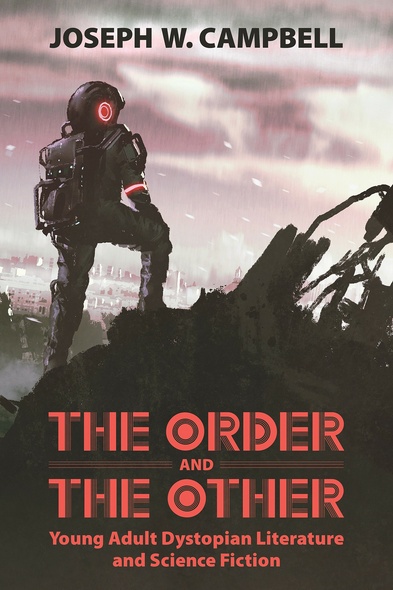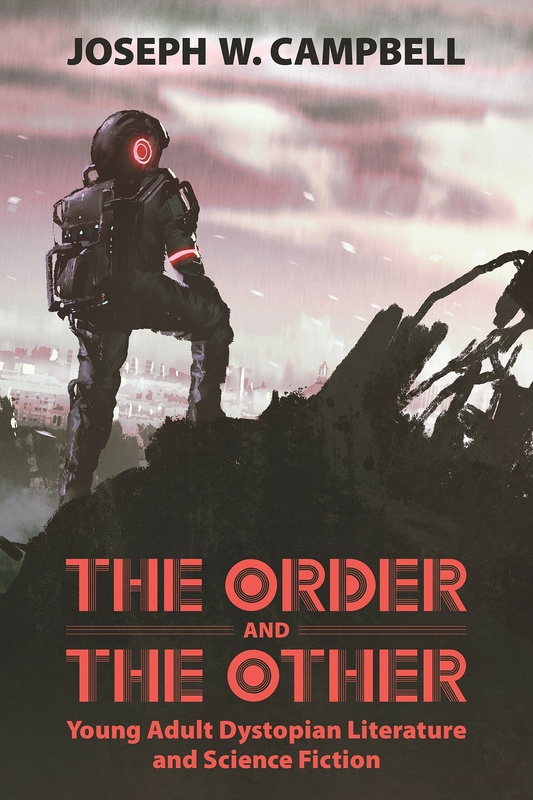
The Order and the Other
Young Adult Dystopian Literature and Science Fiction
In the mid- to late 2000s, the United States witnessed a boom in dystopian novels and films intended for young audiences. At that time, many literary critics, journalists, and educators grouped dystopian literature together with science fiction, leading to possible misunderstandings of the unique history, aspects, and functions of science fiction and dystopian genres.
Though texts within these two genres may share similar settings, plot devices, and characters, each genre’s value is different because they do distinctively different sociocritical work in relation to the culture that produces them. In The Order and the Other: Young Adult Dystopian Literature and Science Fiction, author Joseph W. Campbell distinguishes the two genres, explains the function of each, and outlines the different impact each has upon readers.
Campbell analyzes such works as Lois Lowry’s The Giver and James Dashner’s The Maze Runner, placing dystopian works into the larger context of literary history. He asserts both dystopian literature and science fiction differently empower and manipulate readers, encouraging them to look critically at the way they are taught to encounter those who are different from them and how to recognize and work within or against the power structures around them. In doing so, Campbell demonstrates the necessity of both genres.
Through The Order and the Other, Joseph W. Campbell makes an important contribution to a sparsely explored but important area of pedagogical discovery.
The Order and the Other is a cogent addition to scholarship on dystopian and science fiction literature for young audiences and will be especially useful for those who want to differentiate between the two.
The book is highly recommended for those interested in how science fiction and dystopian literature can be utilized in a classroom setting and why they should be; educators wondering just what lessons they might teach using such works; anyone looking for a compilation of titles in these genres; and lovers of theory, especially those seeking practical applications thereof.
Campbell has made a thoughtful contribution to the critical study of science fiction and dystopian literature.a
This a multi-faceted book. It is an erudite and lucid discussion of critical theory as applied to SF and dystopia. It is a source book for instructors who want to learn how better to employ such texts. It is also a call to action. Teachers are urged to think more systematically about the two genres and choose texts that will develop in students an ability to appreciate new ways to look at the self, the other, and the struggles inherent in living in a largely dystopic world.
The depth and breadth of textual examples throughout The Order and the Other is both impressive and refreshing. . . . Texts for young adults wield significant power, especially those in the genres of dystopia and science fiction, and this book seeks to acknowledge and articulate this power in productive ways.
This a multi-faceted book. It is an erudite and lucid discussion of critical theory as applied to SF and dystopia. It is a source book for instructors who want to learn how better to employ such texts.
The Order and the Other will be of interest to scholars of children’s literature and of speculative fiction. Joseph W. Campbell offers a much-needed perspective on these two genres, which continue to absorb adolescent audiences and thus continue to provide ways—both visible and invisible—for young readers to understand themselves, especially in the context of the societies they inhabit.
Joseph W. Campbell is an English instructor at Casper College in Casper, Wyoming. He received his PhD from Illinois State University. He was a contributor to Blast, Corrupt, Dismantle, Erase: Contemporary North American Dystopian Literature.




